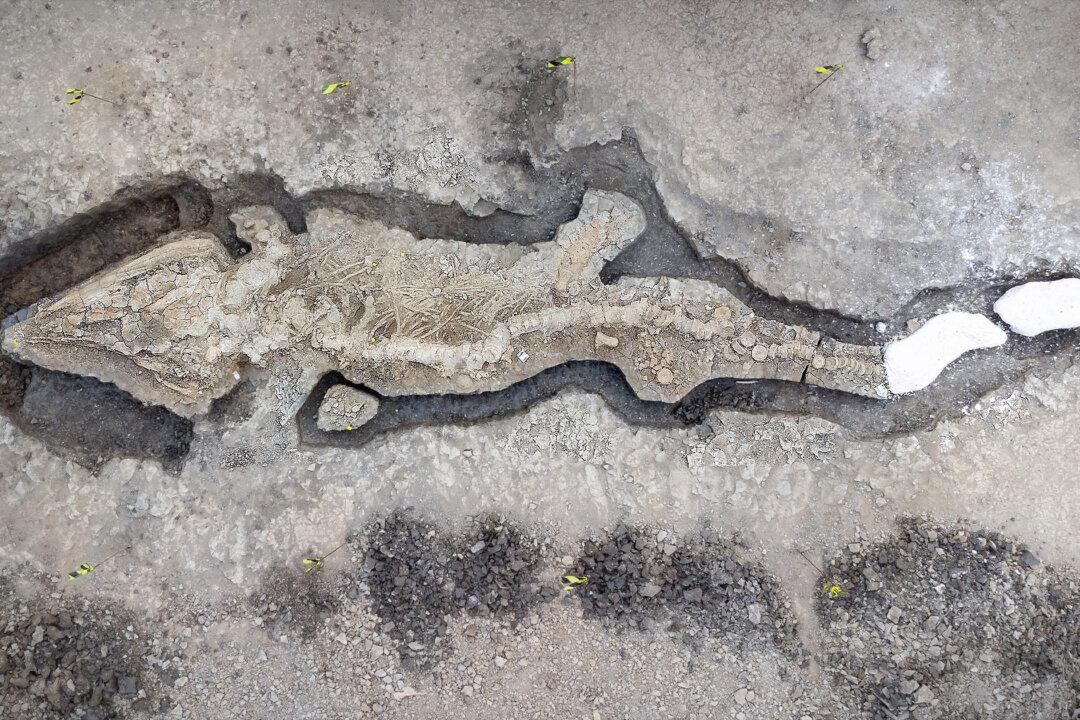The routine draining of a lagoon in Britain exposed the remains of a Jurassic reptilian sea-dweller called the ichthyosaur—more impressively known as the “sea dragon.”
In preparation for re-landscaping, regrading islands in the UK’s Rutland Water Nature Reserve, Rutland water conservation team leader Joe Davis, alongside Reserves Officer Paul Trevor, spotted what looked like “clay pipes” protruding from the mud. Only they weren’t pipes. Davis noted that they “looked organic.”






